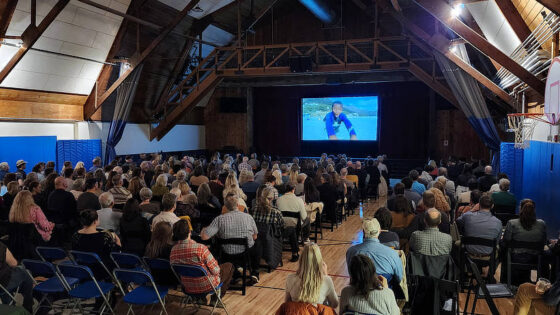This article is part of a four-part series about riparian forested buffers in Lancaster County, Pennsylvania. It is reprinted with permission from Lancaster Farming.
Text and photos by Dick Wanner
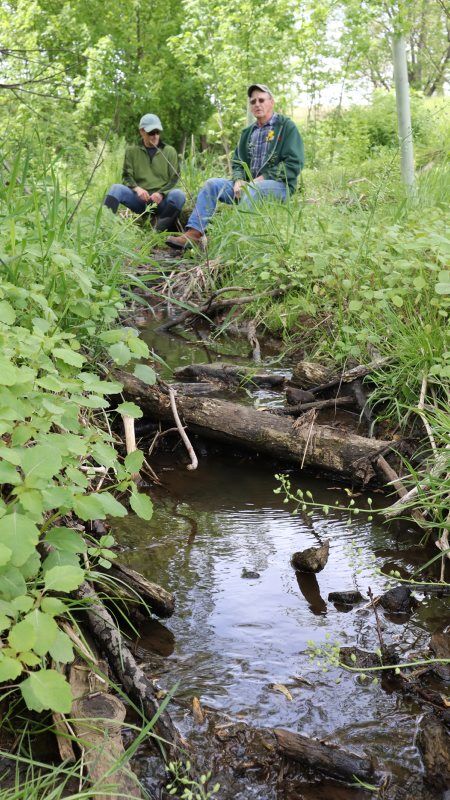
John Young and his wife, Terry, farm 22 acres of preserved farmland about 6 miles north of the Lancaster County town of Manheim.
Young was born on a nearby farm where his father ran a 20-cow dairy herd while working a full-time job off the farm. Young continued in his father’s footsteps with a full-time farm life and a full-time job as a maintenance mechanic at Alcoa in Lancaster, from which he retired in 2009 after 32 years.
At one time, Young’s main farm enterprise was boarding dairy heifers, but in his retirement years he’s growing mostly corn and soybeans, and a bit of hay.
One field on the farm is a 3-acre slope that, with a few more degrees of incline, you could call a mountainside. Until three years ago, that field was a meadow because it wasn’t suited for anything else. Now it’s a 3-acre riparian buffer with 675 trees and shrubs that have grown up and out of their 5-foot-tall tree tubes since they were planted the first week of October 2018.
The buffer is designed to protect a stream that flows from a spring on a neighboring property. It’s a tiny, clear, gurgling stream, a foot wide, maybe 2 feet in places, and a few inches deep. A trickle, you might call it, when you get to the bottom of the hill, and you would only find it at the bottom of the hill because it’s surrounded by plant life.
We found it when we visited Young in the company of Lamonte Garber, watershed restoration coordinator at Stroud Water Research Center, a nonprofit in neighboring Chester County.
Garber pointed out the significance of the trickle at the foot of Young’s slope. It, and many more thousands like it, actually contain about 85% of all the surface water in the Chesapeake Bay watershed. Protecting the bay means protecting the creeks and rivers that flow into it, and protecting the creeks and rivers means protecting the trickles.
Part of the Stroud Center’s mission is protecting the bay, and riparian buffers are one of the key elements in their strategic planning, along with no-till, cover crops, nutrient management and runoff mitigation.
Maintaining Riparian Buffers
We visited Young on a day when he was planning to do some buffer maintenance. Garber pointed out that maintenance is important to the long-term survival of the new plants in a buffer, but it’s especially critical in the first three years. When they’re planted, the seedlings are tied to wooden stakes, then a 5-foot long tree tube is placed over the stake and the seedling. Each tube rests on the ground. It protects the seedlings from voles at the ground level, and from deer who like to forage on the young plants, and who don’t like the 5-foot stretch to the top of the tube.
There’s about a foot of mostly bare dirt around each tube, which helps keep voles at bay. Those bare spots are thanks to periodic spraying with an herbicide. A blanket of orchardgrass, about knee high, covers the space between the plants. There’s some alfalfa mixed in, a few guest plants like dandelions and buttercups, but not many troublesome invasives in evidence.
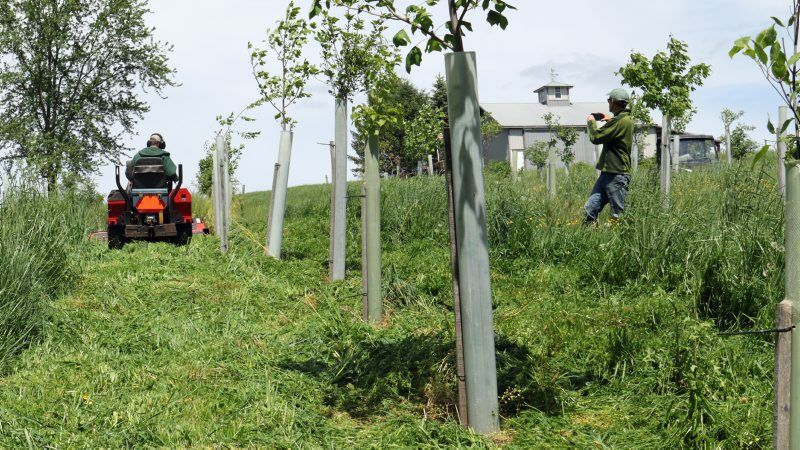
Garber said the annual weeds aren’t that much of a problem, especially in a buffer like Young’s where the planted cover is so lush and thick. Two of Young’s biggest issues are multiflora rose and bittersweet vines that find their way inside the tubes when birds pay a visit. Birds can carry seeds in their droppings, and every seed comes with its own little fertilizer pellet.
Garber said a partial solution to the perennial vine problem is to drop pre-emergent herbicides down into the tubes. It helps, but it’s not a complete solution.
Young pulled multiflora vines from a number of tubes, but one of the vines was so big it had burst through the top of the tree tube. It had more growth, actually, then the tree that was supposed to be the sole occupant. As Young approached the tube, ready to cut the vine off at the bottom and yank it out from the top, a robin chirped and flew away. She had a well-built orchardgrass nest in the tree, and in the nest were four tiny chicks waiting for Mom to come back. So the multiflora issue would have to wait a while.
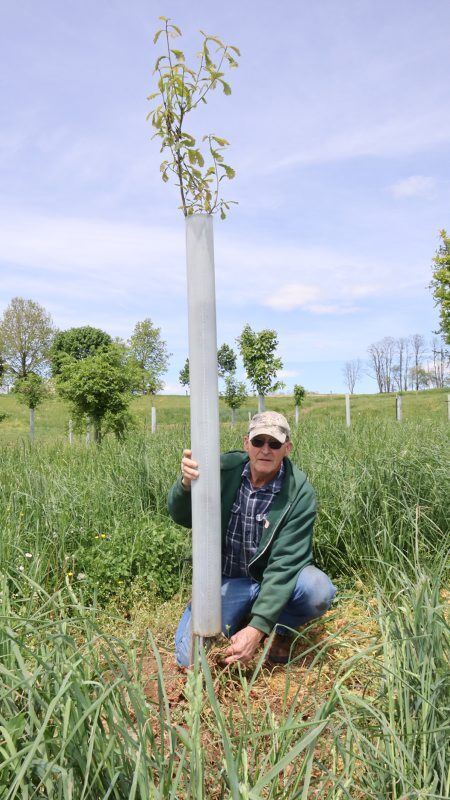
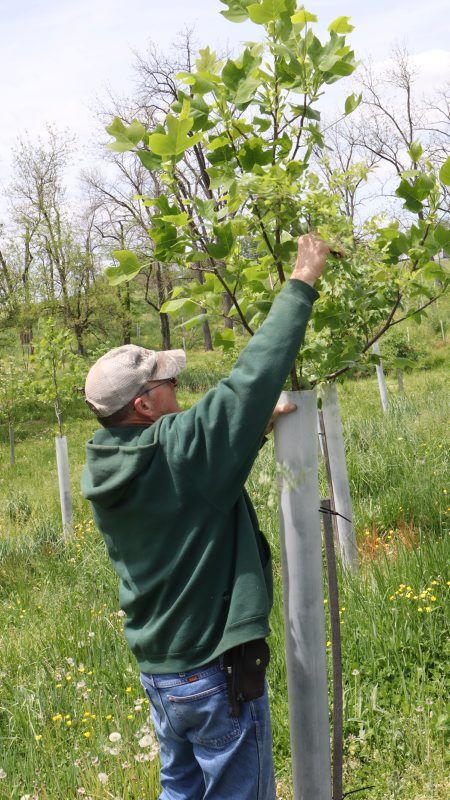
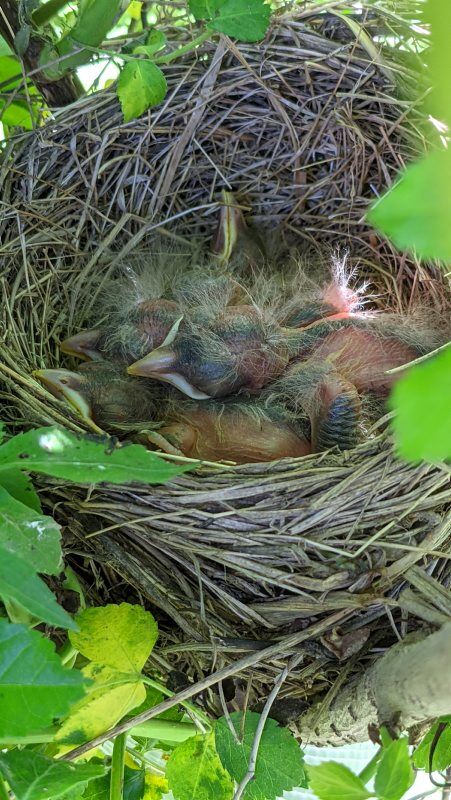
Which leads to an interesting tangent. There are lots of environmental reasons to install a riparian buffer. But Terry Young likes birds. She feeds them in the backyard and says there have been more of them since the buffer has grown.
“And do you know what is one of the most requested features when we ask farmers what plants they want in their buffers?” Garber asked, rhetorically.
“No,” we confessed.
“Flowers. They want trees and shrubs with flowers, like dogwoods and elderberries,” he said. “So we give them flowers.”
The Stroud Center’s contribution to the Youngs’ project was planning, coordination, technical assistance and funding for the seedlings, stakes and tubes. Other nonprofits and government agencies also fund buffers, which are sometimes planted at no cost to the landowner. There are more than a dozen sources of buffer funds composed of an alphabet soup of organizations with initials like CREP, CBF, PSU, DCNR and THCWP.
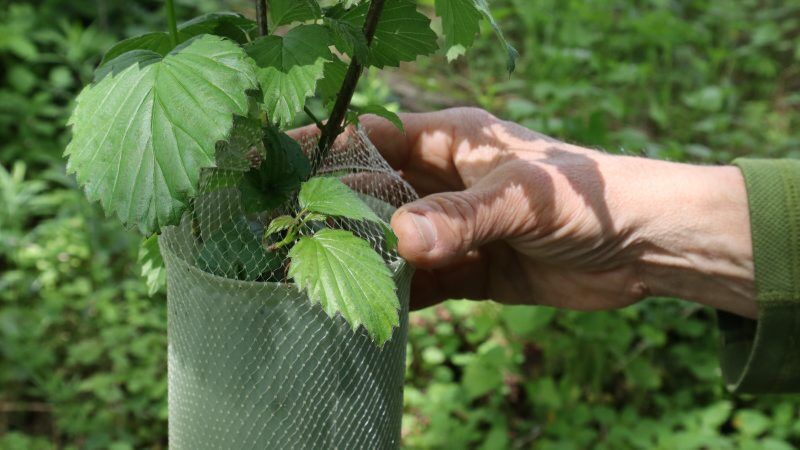
Generally, labor is a significant part of the $2,500 average cost of installing a buffer, but the Youngs skipped that part by hosting a multigenerational event to get their seedlings into the ground. The Youngs organized a family planting party with about a dozen or so children and grandchildren all pitching in to dig the holes and plant, stake and tube the seedlings.
“We got the whole family involved. Everybody got to appreciate what we were doing for nature, and they’ll be able to see it grow over the years,” Young said.
Which is just one more reason to plant a buffer.


